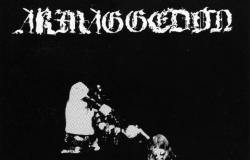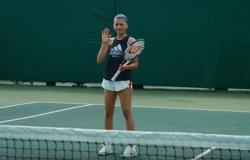«Pino Pascali had 14 solo exhibitions in a period of just 4 and a half years, we thought of recreating five of them (plus one piece) in one of the four sections that make up this broad perspective» with these words Mark Godfrey, English art historian and already curator of many successful exhibitions at the Tate Modern, begins to talk about the exhibition itinerary that he and the curatorial team of Fondazione Prada devised to explore the many forms that Pino Pascali’s art took during his intense career, which was cut short prematurely in 1968 at just 33 years old, after a serious accident with his motorcycle, which also for this reason consecrated him as a mythical figure of poor art.
In the first part of the Podium we can therefore review the attempts at philological reconstruction of Pascali’s most significant exhibitions, starting from the first in 1965 at the Tartaruga in Rome, with works that curiously oscillated between metaphysics, pop and together homages to Piero Manzoni. Or the one at the Attic in 1966, partially reconstructed here with the famous zoomorphic sculptures. And again, in the same year, the one from Sperone con le Armi: works that were already curious at the time and which have retained their terrible charm even today. And when it seemed to begin to understand his language, made up of out-of-scale and simplified objects, and other mimetic and plausible ones, the artist took another sharp turn and began to work with still dissimilar materials, colors and results, sometimes surprising, but always ingeniously scenographic and capable of speaking to anyone, without ever really using the language (already largely hegemonic at the time) of Pop Art. And then here they are; his works which for many years have already been part of the familiar panorama of the Milanese collecting of Contropelo (Pelo), for the 1968 Biennale (his last exhibition) and historically already exhibited at the PAC in Milan. And the Bachi da Setola, a brilliant comedy title for works which in their simplicity say so much more about the changes in the domestic and industrial panorama which would later have a significant impact on that same environment and idea of nature that the Arte Povera group was returned to look at it as a subject with which to correspond.
This first group of works would already be enough to raise an infinite number of questions about who Pascali was, and the legacy of his intuitions. To begin with, the heterogeneity of his production says a lot about the extraordinary nature of his career «In those few and intense years of his career Pascali did not settle on recognizable and replicable works, but going through these reconstructed exhibitions one might think of the work of different artists» explains Mark Godfrey, who attributes a primacy to the artist from Bari «Pascali was the first artist to attribute equal importance to the creation of individual works as well as to the staging of the exhibitions that host them.» One could object that no one else before Pascali understood the importance of juxtapositions in the overall rendering of the exhibition space; it is true, however, that looking at these works from fifty or sixty years ago, one notices that Pascali was a master in mastering the scenic space of his exhibitions, often undersized to accommodate his works, as if to invite the spectator to crawl and make his way among them, or to make environments visible from particular perspectives.
Pascali (like Warhol) took his first steps in the world of advertising graphics, an activity perhaps considered minor at the time, but which nevertheless gave the artist a capacity for synthesis and immediate graphic visualization of the idea; in fact, it cannot be underestimated how much Pascali assimilated and collected from all the varied modern figurative experience, and above all from a master like Steinberg.
As is well known, Pascali’s training passed through his work as a set designer and the construction of television sets for RAI, which, however much we might try today to see traits or references, in the works exhibited at the Foundation we struggle to imagine a dimension “television” in this sort of poetically naive Noah’s ark of objects and animals saved from the universal flood of what will then be TV in our experience. Regarding this plurality of languages, Germano Celant in his text for the artist’s retrospective at the IVAM in València in 1992, entitled The euphoria of the sensitive, he noted of Pascali «He lives, perhaps, in a historical moment – the 1960s – where this unity is “lost”, partial explanations and provisional models are offered, such as those provided by the nascent large media, of which Pascali initially participates as a set designer and actor on Italian television. It “shares” them on the level of linguistic explosion and diversification, but tries to guarantee freedom of action and dignity for the artist by contrasting them, taking them, therefore, from a unilateral point of view: that of the human being who “constructs ” or “rebuilds”, with his hands and not with machines, his universe, made up of animals, things and nature».
Precisely this last step helps to better frame the “shamanic” component to quote the title of a beautiful exhibition that Francesco Stocchi curated, again in Milan, in 2017 (Pascali Shaman, at the Carriero Foundation). The artist uses the most disparate materials, drawing equally from the rural world as well as from that of mass-produced artificial products and the new “wonders” offered by industry, bringing them together, superimposing their apotropaic values and projecting them into an imaginary which, once again once it would be wrong to assimilate it to the ways in which Oldenburg or Warhol reified the commodity into sculpture, but which instead, with sensibilities similar to other authors of Arte Povera (some of whom are compared in one of the 4 sections of the exhibition), looked with confident wonder at the possibility of bringing together the world of the countryside with that of industry in a utopian ecology. Exemplary in this sense is one of the shots collected in the section that retraces the installations with period photos and films, the playful and uninhibited portraits of the artist, where we see Pascali lying in a field while contemplating his Bachi da Setola.
It is on the upper floor of the Podium that we encounter perhaps the most “instructive” passage of the entire journey: thanks to a rich selection of magazines of the time, it is clear how fundamental the advent of new materials and their creative appropriation. The industrial colors of the automotive industry had already seduced American artists such as Donald Judd and Italians such as Boetti, plastic fibers and synthetic fur intended only for the production of mass objects but which in Pascali’s imaginative visions became ideal materials for covering his works, giving the The experience of art a new tactile dimension. This unprecedented total openness on the part of artists and creatives to technological progress undoubtedly projected art so far forward that, even today, for many observers, most of the forms that art expresses are essentially stuck with the inventions of the 1960s .
Scrolling through the pages of the magazines open in the display cases, dozens of advertisements appear that today we would define as “camp”, populated by female figures with permanent sculptures, accompanied by claims such as “there is no house without plastic”, “Eternit for ventilation ducts, pipes flues, hoods, fireplaces, purifiers, flower vases…”, “Yessss, the young hairspray that keeps you young” and “he who runs young runs Agip”. They are promises that not only Italy, but the whole world believed in, ultimately part of that magic that Pino Pascali managed to generate by fusing agrarian rites with those of factories and the waste of consumerism. Yet, something seems to have been lost forever and those dreams fossilized in an indefinable time to which Pascali’s dinosaur bones belong: manifestations of natural forms as we could see them in a television show, but no longer in reality.









